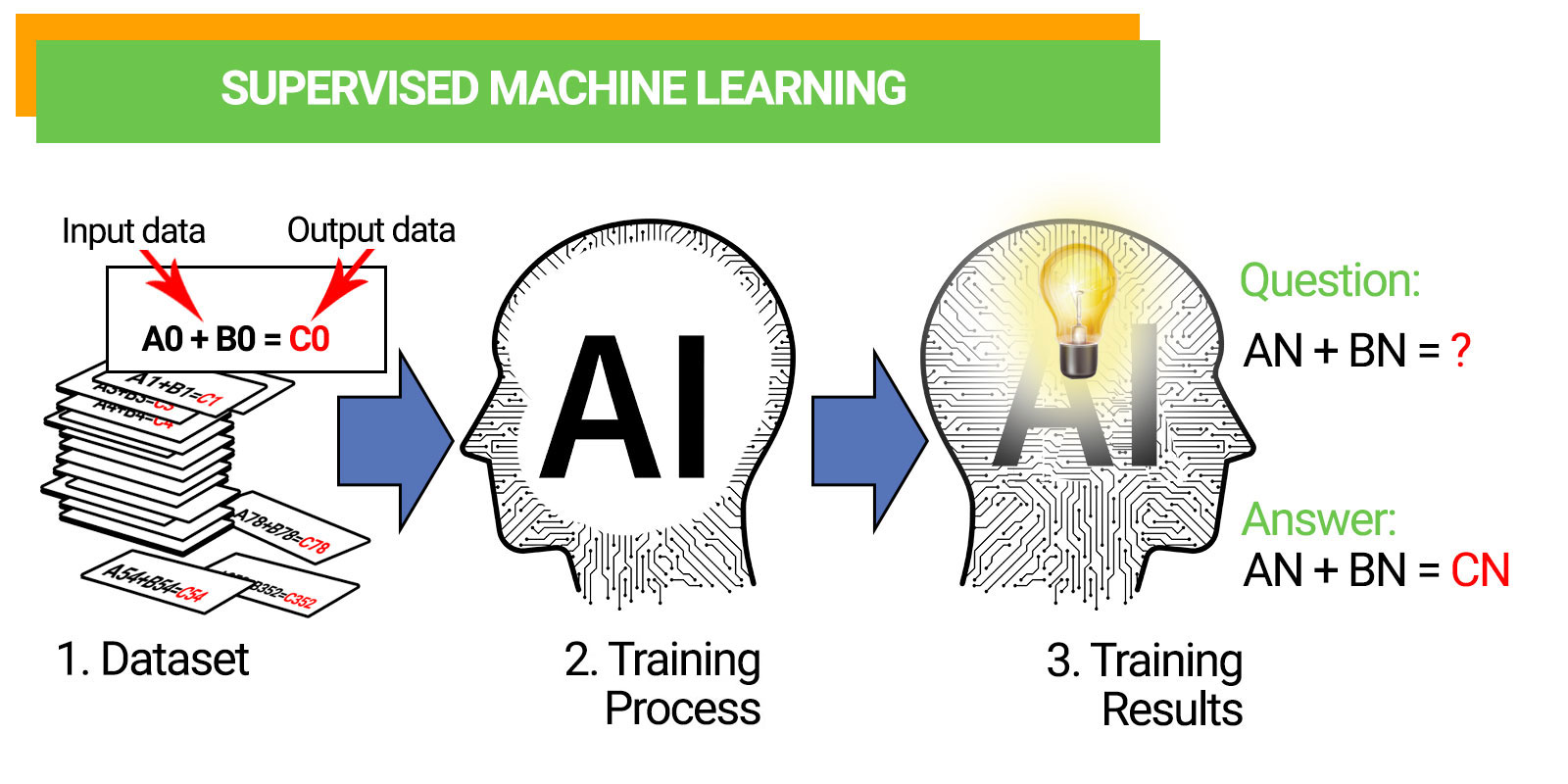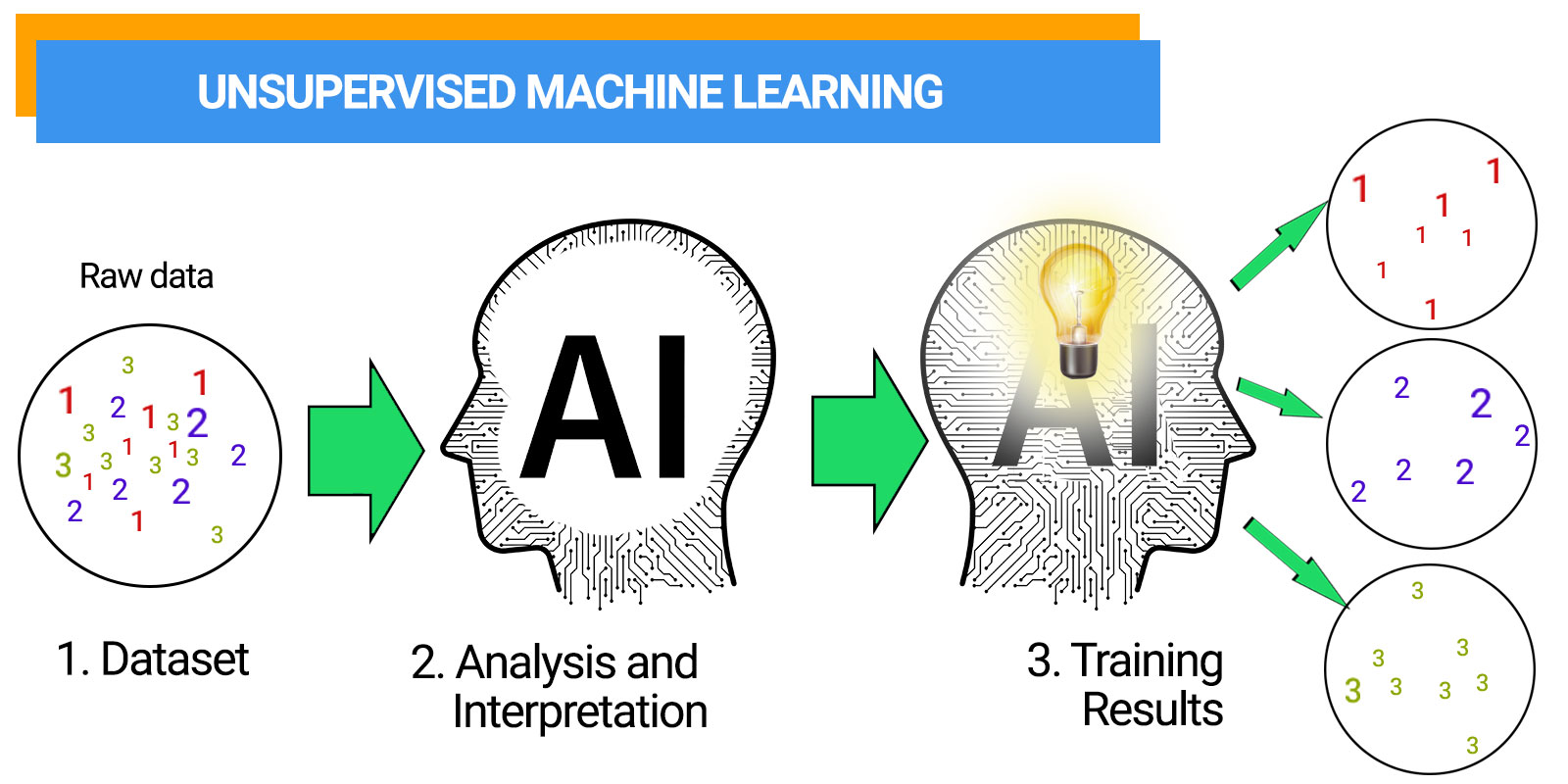Custom Machine Learning Artificial Intelligence Solutions
Machine Learning and Deep Learning systems, when appropriately trained, can:
- make accurate predictions almost of any kind
- analyze textual, graphic, audio, and video content
- process the natural language in a way people do it
- generate the design based onpreset parameters and historical data
- and much much else!
Moreover, these tasks work enormously faster than a human would do it, and sometimes even more accurate.
Want to know how Machine Learning solutions can do it for your business too? Read on to know more!
Machine Learning
So, the training process includes the comparison of pairs time and again. As a result, the system finds all the dependencies. And these dependencies are between the initial and resulting parameters.
There are two main approaches to the training process in Machine Learning, called Supervised and Unsupervised Training, respectively. Both of them are shown in the pictures below:


Deep Learning
Deep Learning is the next step in technology. It combines different datasets and different learning approaches repeatedly, achieving the required intelligence level step by step. It allows training AI to solve the most complex and non-trivial tasks.
One excellent example is adding color to old grayscale images and videos. The task, if handled manually, is very time-consuming. The neural network combines global actions based on the entire image parameters, with local ones calculated using small patches of it.
Such a combo allows the AI to instantly add realistic coloring to the black and white image or video. The result usually comes with higher quality than people do manually.
Other duties in the legal domain which AI can handle, include:
- help with due diligence
- review and management of contracts
- automate routine law procedures, e.g. divorce
- predict the outcome of a certain case.
AI plays a vital role in business. It's promising because it operates by doing the following:
- Generative architectural design based on parameters (BIM) helps to check all possibilities and find the most appropriate one in the shortest possible time.
- Tender estimates made by AI are much more precise than those made by people.
- Drones provide valuable data. This data focuses on quality and safety control. In turn, this cuts the spending to a great extent.
- The supply chain is still underused in the construction industry. With AI implementation, this can bring about a positive change.
With Machine Learning, you can:
- predict the length of patient stay
- simplify and speed up the diagnosing
- automate resource planning and scheduling.
One such use of Machine Learning is a drop of 25% hospital stay and 90% reduction in discharge to a nursing facility.
- The second wave of automation will help to robotize up to 25% of all banking operations in the next few years.
- Capital One uses Machine Learning to highlight any discrepancy in card usage. If a customer gets a debit twice, the virtual assistant notifies him. Thereby it prevents monetary loss in the suspicious transaction.
- Early detection of probable fraud, and analyzing anomalies is another aspect that’s gaining ground here.
- AI-powered credit decisions are much faster and accurate than manual decision making.
- Risk management and assessment using AI help mitigate risks better.
- OneSoil uses drones to analyze soil and crops. Such an analysis allows farm machine operators to crop
- and apply fertilizers selectively. The company reports that such an approach helps to cut spending on up to $70,000 per tractor per year.
Other areas where Machine Learning is in use are:
- carpooling and carsharing services
- car parking aggregation apps
- monitoring passenger safety
- traffic analysis and optimization
With this implementation, you get:
- personalized buy suggestion
- behavioral tracking
- detecting probable security threats in crowded areas
- and predicting accurate demand forecasts are gaining traction among major retailers.
Self-learning is the new trend now. In a survey conducted among students, 77.84% of students mentioned taking an online course at least once in a year. The need to personalize learning requirements is pressing. Given that there are millions of courses each catering to a specific learning need. Thus, identifying learning categories becomes vital.
Along with it, the Machine Learned AI is highly helpful in fact-checking. The higher the volume of data that you check, the higher the gap between the human and computer abilities.
In this field, the Machine Learning tech covers several processes.
Some of them are:
- friend-or-foe recognition
- goods movement control in a warehouse
- access control based on face recognition.
- Microsoft has Azure ML Studio for business and Distributed Machine Learning Toolkit framework.
- Google supports the open-source TensorFlow solution.
- One of the most active is Apache. It has Spark for general purposes and Singa for deep learning.
- Facebook has developed the Caffe2 framework.
- Amazon AWS also provides the required cloud infrastructure for machine learning.
- There are many independent solutions presented, as well.
- Getting the data for the dataset.
- Labeling the data.
- Deploying an infrastructure (most often in a cloud).
- Training of AI.
- Validating the result.
- Testing.
- Running.
Training, validation, and test sets
The core elements of every ML system are several types of datasets. Every dataset is a kind of tutorial for the learning process.
- The training one consists of a sizeable number of similar examples. AI uses these examples to fit the parameters and simulate dependencies.
- The next one is validation dataset with a much smaller number of elements. All they must never be used in the first set.
- The last one is to finish testing. It must contain only unique records, too. Rather often there is no need in the third set to train the system well
Is the usage of AI safe for business?
Some reasons for the slow growth of the Machine Learning systems are:
- Lack of standard procedures. Since no two problems are alike, following a standard procedure in machine learning is not ideal. With these variations, it becomes difficult to follow the rules, especially when many people are working on a project. It means there are high chances of output error as compared to a traditional approach.
- Inadequate talent. Unlike other algorithms like data mining and big data, machine learning is yet to get full acceptance. Because of this, few people are working on creating path-breaking work.
- Classification. In the case of aggregated data, similar clusters can result in better output. But, when clusters have many sub-groups each with a deeper connection to other groups, it can get exhausting. Knowing each trait is a challenge, much like searching for one distinct output among millions.
Conclusion
- The Machine Learning and Deep Learning solutions help different businesses stay relevant. By doing so, they assist businesses to achieve results unheard of till recent times. The results look very impressive, so the ML is often a way to disrupt all the old approaches.
- Most of the industries are quickly adopting Artificial Intelligence. By taking the AI approach, your business will scale in a relatively short time!
- If you are keen to adopt Machine Learning but have any doubts, get in touch with us! Do fill in the form below and we’ll promptly answer all your questions!
